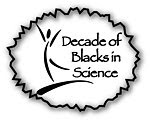In search of……treasure, glorious plastic rubbish that is scientific treasure. Aaarrgh!
Seriously though, my BBFF (blogging best friend forever), Miriam G is headed out into the great vastness of the Pacific Ocean and leading her crew aboard the SEAPLEX - Scripps Environmental Accumulation of Plastic Expedition. Their mission… “Seeking the Science of the Pacific Ocean Garbage Patch”.
“From August 2-21, a group of doctoral students and research volunteers from Scripps Institution of Oceanography at UC San Diego will embark on an expedition aboard the Scripps research vessel New Horizon to explore the problem of plastic in the North Pacific Gyre. The Scripps Environmental Accumulation of Plastic Expedition (SEAPLEX) is the first of its kind and will focus on a suite of critical questions. How much plastic is accumulating, how is it distributed, and how is it affecting ocean life? The researchers hope to provide critical, timely data to policy makers and combine Scripps' long tradition of Pacific exploration with focus on a new and pressing environmental problem.”
 Photo: Scripps Institution of Oceanography research vessel New Horizon off San Diego on May 6, 2009.
Photo: Scripps Institution of Oceanography research vessel New Horizon off San Diego on May 6, 2009.Doesn’t this sound like the most exciting research ever? I think so. This type of research is not only interested in whole communities –t he plants, animals, and microbes of the sea – but also the entire ecosystem – marine – and how we humans and our activities influence the marine ecosystem and its communities. Have you ever thought about what happens with all of our plastic trash we discard? What about those plastic bags from the grocery store? There always seems to be bags floating in the air, sailing across the ground…and where does it end? What about plastic containers from water bottles, laundry detergent, juice or other food items? Unlike paper or fiber containers, plastic doesn’t obey the ‘rules of decomposition’. It doesn’t easily break down, so it just sits there – or floats – forever and ever. Okay, not forever, but for a time much longer than we live, and we and discard plastic like running water, so we must begin to think about managing it when we’re done with it.
 Photo: NOAA Marine Debris Program
Photo: NOAA Marine Debris ProgramEach day, the crew will post updates and let us all know how the weather is treating them, how the sampling goes, and what they are finding. I love how we are able to follow their progress and get a chance to observe a ‘real-life scientific expedition’ in progress. I’m looking forward to it all.
Join me in following SEAPLEX on its High Seas Adventures!
Visit and subscribe to the Blog: http://seaplexscience.com
Follow their every move and discovery at Twitter: @seaplexscience
 Ethology is the study of animal behavior in their natural habitats. I was invited to participate in a symposium all about animal personality and behavioral syndromes. I'll be presenting my dissertation at this conference, so that is one of the many reasons why I have been so keen on making sure my results and interpretations are right on. I'll be the only non-professor participating in this conference - heavy hitters - and I'm presenting an opposing view, so I want to make sure I am spot on and ready for the critiques. But I still think I'll be able to pull off a committee meeting before leaving, giving me some much needed preparation for the meeting, assuming I can get them all in the room at the same time. Plus, my remaining dissertation chapters are shaping up. There's been a lot of surgery, deleting parts and analysis, simply because it just doesn't stick to the main point. The good news is that
Ethology is the study of animal behavior in their natural habitats. I was invited to participate in a symposium all about animal personality and behavioral syndromes. I'll be presenting my dissertation at this conference, so that is one of the many reasons why I have been so keen on making sure my results and interpretations are right on. I'll be the only non-professor participating in this conference - heavy hitters - and I'm presenting an opposing view, so I want to make sure I am spot on and ready for the critiques. But I still think I'll be able to pull off a committee meeting before leaving, giving me some much needed preparation for the meeting, assuming I can get them all in the room at the same time. Plus, my remaining dissertation chapters are shaping up. There's been a lot of surgery, deleting parts and analysis, simply because it just doesn't stick to the main point. The good news is that  And though I am trailing in votes I am amazed my the role of social media and it's ability to reach so many different people so quickly. I know thousands of people have heard of this contest and of my efforts simply because of the forwarded emails,
And though I am trailing in votes I am amazed my the role of social media and it's ability to reach so many different people so quickly. I know thousands of people have heard of this contest and of my efforts simply because of the forwarded emails, 








 Me at the
Me at the 






 This is my life right now. I've printed a ream of paper (no kidding, almost 500 sheets of paper) in the last week with clear end in site. I still have two more dissertation chapters to analyze and write.
This is my life right now. I've printed a ream of paper (no kidding, almost 500 sheets of paper) in the last week with clear end in site. I still have two more dissertation chapters to analyze and write. A lady beetle on a locust tree.
A lady beetle on a locust tree.














































